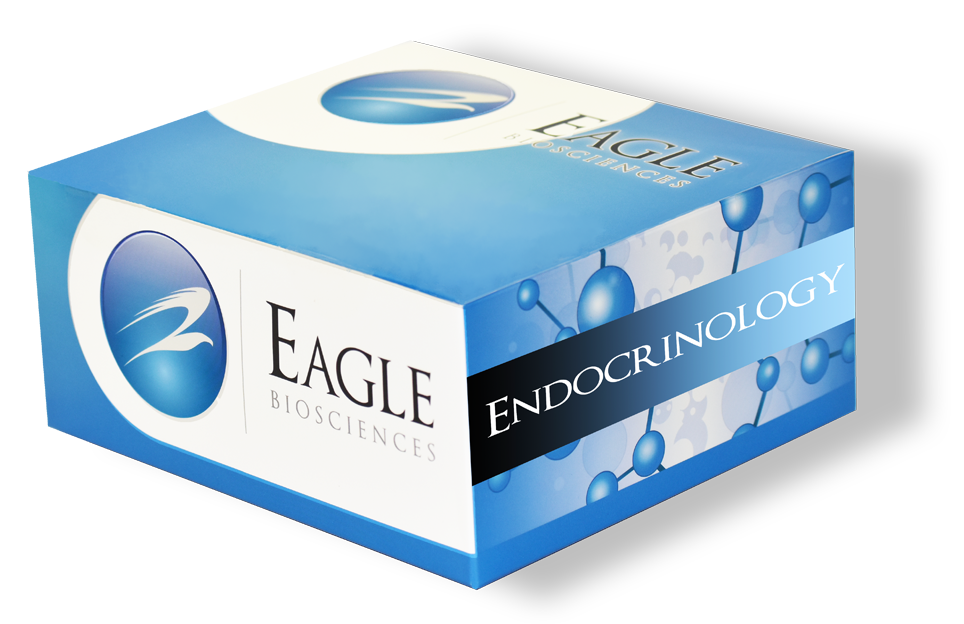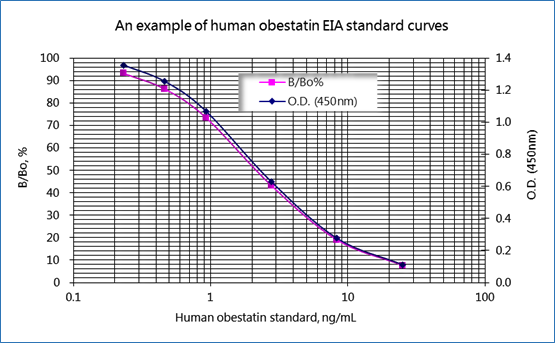Human Obestatin ELISA Assay
The Human Obestatin ELISA Assay is For Research Use Only
Size: 1×96 wells
Dynamic Range: 0.231 – 25 ng/mL
Incubation Time: 24 hours
Sample Type: Human plasma, serum
Sample Size: 20 μL
Specificity: The Eagle Biosciences Human Obestatin ELISA Assay kit shows cross-reactivity of 100% to human obestatin, 37.3% to mouse/rat obestatin, 25.2% to human obestatin (11-23)-NH2, less than 0.02% to human/mouse/rat obestatin (1-10), and no cross-reactivity to mouse/rat obestatin (11-23)-NH2. It shows no crossreactivity to human ghrelin and human des-octanoyl ghrelin in the range of standard concentrations.
Assay Principle
This Human Obestatin ELISA for determination of obestatin in human plasma or serum samples is based on a competitive enzyme immunoassay using the combination of highly specific antibody to human obestatin and biotin–avidin affinity system. The 96 wells plate is coated with goat anti rabbit IgG, to which biotinylated human obestatin, human obestatin standard or samples and rabbit anti human obestatin antibody are added for competitive immunoreaction. After incubation and plate washing, horse radish peroxidase (HRP) labeled streptavidin (SA) is added, so that HRP labeled SA-biotinylated human obestatin-antibody complex is formed on the surface of the wells. Finally, HRP enzyme activity is determined by 3,3’,5,5’-Tetramethylbenzidine (TMB) and the concentration of human obestatin is calculated.
Related Products
Rodent Obestatin ELISA Assay
Human PYY ELISA Assay
Human GIP (Active) ELISA Assay Kit



